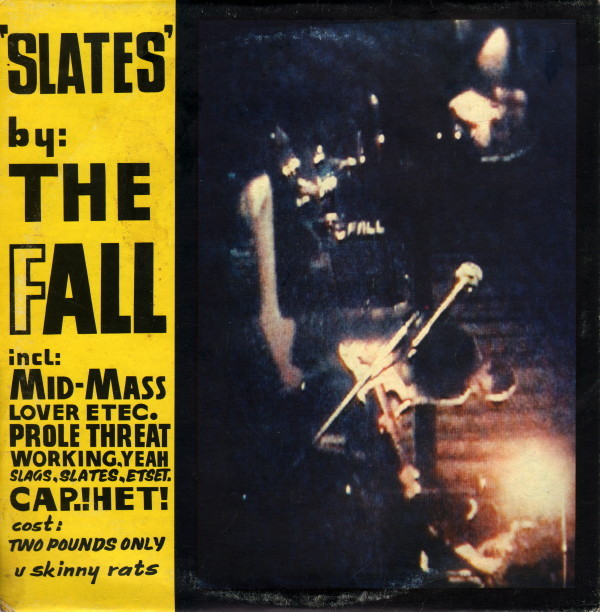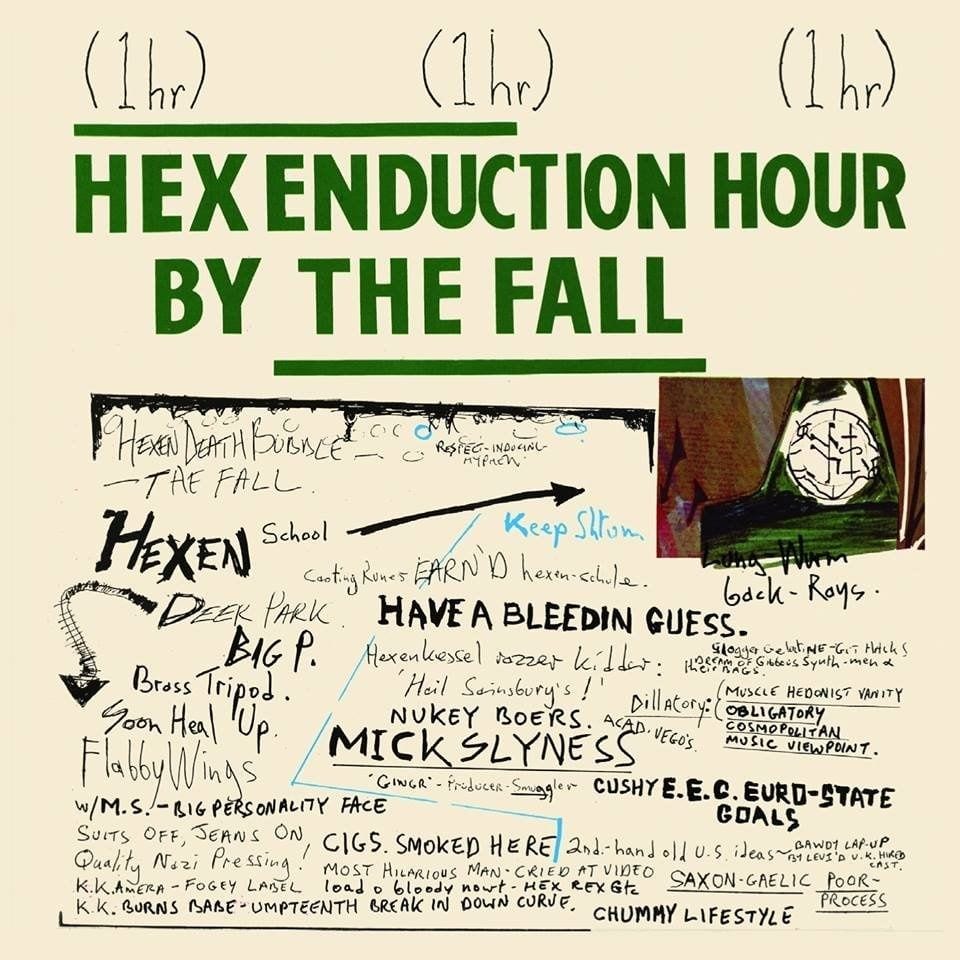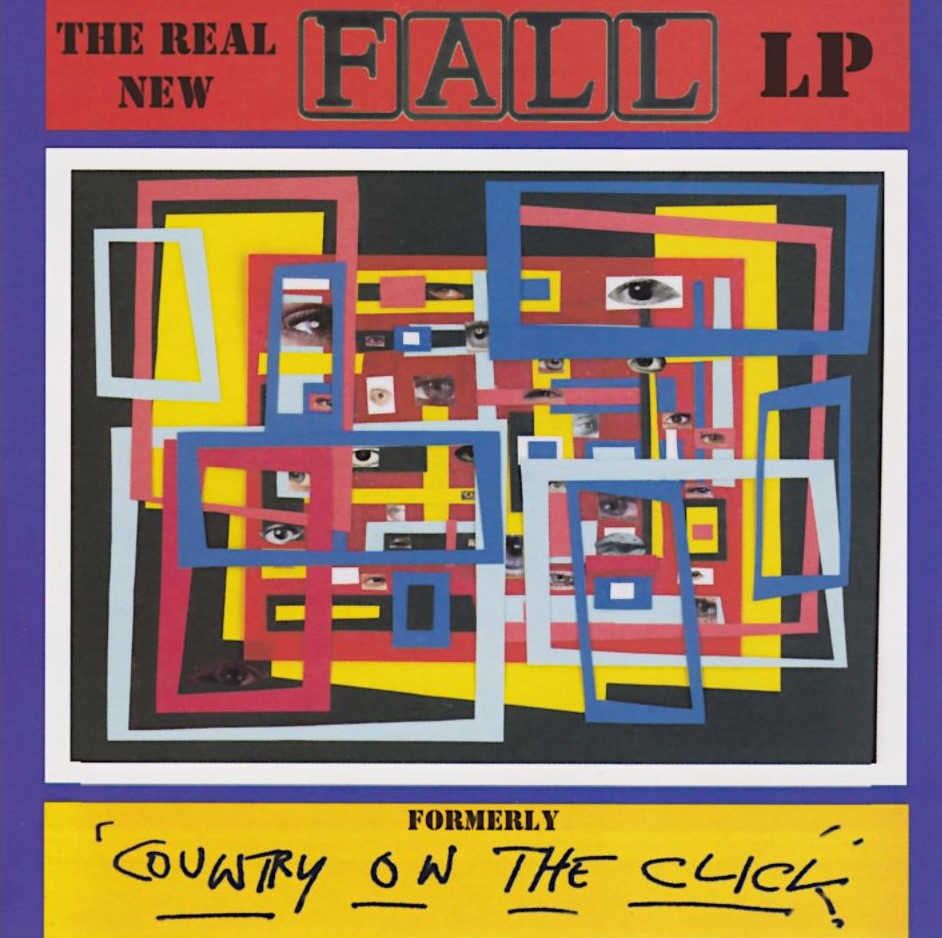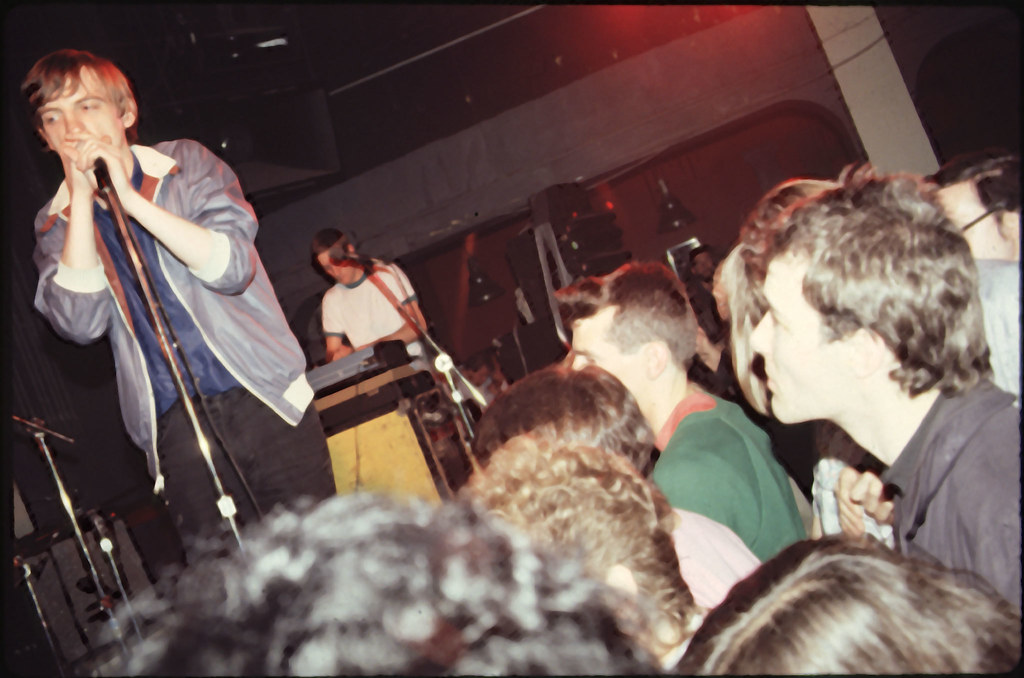The Fall performing in San Francisco, California on July 25th, 1981 as Dead Kennedys vocalist Jello Biafra watches (Photo Courtesy of Steve Harlow).
Author: Nicholas Brandis
The Fall are my favorite band. Endlessly creative, challenging, and non-compromising, The Fall embodied exactly that which all artists should strive to be. Across their over four-decade long career, The Fall were both the most prolific, as well as the most consistent band in post-punk. Somehow mastering both quantity and quality, there isn’t a single dud to be found within The Fall’s catalogue. There are varying degrees of quality to be sure, but everything The Fall made is worth listening to. I am in good company with this point of view, as it is a perspective I share with none other than John Peel, the legendary DJ and host of Radio 1. Peel had this to say about how one should approach the band’s colossal catalogue in the 2015 documentary, “It’s Not Repetition, It’s Discipline”:
“A lot of these people write to me and say, ‘I heard The Fall, what record should I get?’, and I never have any hesitation in telling them, ‘You must get them all.’ Because it’s impossible to pick one. You have to have them all. You do. Any new record that comes out, live in Nova Scotia 1984 or something, even if the sound quality’s terrible and he was pissed or he just fired half the band or whatever – you still have to have them. You do. So, there is no answer to that question. In fact, I’ll go further and say anybody who can tell you the five best Fall LPs or the five best Fall tracks has missed the point, really. It’s the whole body of the work that is to be applauded.”
Admittedly, The Fall are a formidable band to approach at first. Once learning that The Fall have 31 studio albums, 55 live albums, 55 compilation albums, 12 EPs, and 46 singles, it may very well be overwhelming for a newcomer to The Fall to decide where they should start. I was recently asked by the senior editor of the KXSU Blog, JB Mellin, if I would be interested in writing an article about The Fall because he knew I was a big fan of the band. I have never jumped on an opportunity so fast. So, to blaspheme against the great John Peel, I intend to do exactly that which he said not to do – name my five favorite Fall albums.

The first essential Fall album (chronologically) you’re going to want to check out is 1979’s Live at the Witch Trials. The title of this record is a bit of a misnomer, given the fact that it is not a live album at all. That being said, the primal intensity present on this record may very well fool you into thinking that it is. Live at the Witch Trials is The Fall’s debut album, and it’s chock full of a youthful punk energy not dissimilar to fellow Mancunian band Buzzcocks. However, instead of focusing on angst-filled love songs like Shelley and company, The Fall instead focused on issues of urban paranoia, life in Northern England, and how much the music industry sucked in late-seventies Britain. There’s something quite cerebral about The Fall, almost to a fault. It practically seems as if Mark E. Smith had never heard the word “love” before – preferring to write songs about industrial estates instead of romance. Live at the Witch Trials would hint at what was to come with The Fall, and while it’s not my favorite album by them, it is near impossible to not be impressed by the frenzied passion that is exuded by this record.
Key Track: “Frightened” – The Fall in many ways were characterized by the three R’s – repetition, repetition, and repetition. “Frightened”, the first track off of Live at the Witch Trials, utilizes this tool of repetition, but not in a way that is tedious or monotonous. In fact, it leaves the listener on the edge of their seat, so when the repetition of the verses is eventually disrupted by the mayhem of the choruses, the tension is released and it is all the more magnificent.

Technically Slates is only an EP, and not a LP, so it’s placement on this list may be contentious. Despite only having six songs, the Slates EP represents The Fall at the height of their powers. I would even go so far as to say that if the Slates EP had a few more tracks included, say for example the “Lie Dream of a Casino Soul” single (also released in 1981), Slates would be a strong contender for the best album of the eighties. With that being said, what is it exactly that makes Slates so good? Well, for starters, it includes a diverse interplay of musical styles and genres, the likes of which had never before been seen. Equal parts krautrock as it is punk, Slates represents a bit of a turning point for The Fall in my mind. While their earlier releases were mostly straight-forward punk or post-punk albums with underlying experimental influences, Slates is the moment that those influences came to the forefront of The Fall’s creative expression, in all of its chaotic glory.
Key Track: “Leave the Capitol” – The final track on the EP, “Leave the Capitol” illustrates Mark E. Smith’s intense dissatisfaction with the city of London, and highlights many of the musical and lyrical elements that would come to define the band for years to come. Listen closely for Steve Hanley’s krautrock-inspired bassline, one of the best he ever recorded.

Hex Enduction Hour was originally intended to be the final Fall album. It’s a bewildering and horrifying thought to think that The Fall’s career could have come to an end in 1982, having only recorded four LPs. The Fall of course have a reputation that precedes them for having a massive discography, so it is hard to imagine that they nearly called it quits so early on. I am eternally grateful that they decided to carry on. With that being said, if Hex Enduction Hour ended up being The Fall’s final statement to the world, what a final statement it would have been.
I once saw someone say that The Fall made music to go insane to, in the best possible way. No other album embodies that description in The Fall’s immense catalogue better than Hex Enduction Hour. Mark E. Smith is never more unhinged and unpredictable than he is on the first track of the album, “The Classical”, with the band behind him matching his mania. Uniquely utilizing two drummers instead of the usual one, the rhythm-section present on this record is unmatched, providing captivatingly cacophonous grooves alongside schizophrenic bursts of guitar.
At times brutal and abrasive (“The Classical”, “And This Day”), and at times surreal and enigmatic (“Winter”, “Iceland”), Hex Enduction Hour is a tour-de-force achievement for both the band and for post-punk in general, exemplifying in every way what The Fall did best – defy labels, subvert expectations, and go crazy while doing it.
Key Tracks: “Hip Priest” – “Hip Priest” is a devastatingly uncommercial track, from its nearly 8-minute runtime to its esoteric lyrics and sense of impending doom. Despite all of this however, it may be the one song by The Fall that the average, non-post-punk listening person has heard before – and they probably didn’t even realize that they were listening to The Fall! Allow me to explain. “Hip Priest” was famously (and creepily) used in the 1991 film Silence of the Lambs during the climatic scene when Clarice enters Buffalo Bill’s basement. The song contributes to the anxiety-inducing atmosphere perfectly. I dare you to watch that scene without getting goosebumps.

The first album from the Brix era of the band to make it onto this list, This Nation’s Saving Grace is a landmark record for The Fall, and is considered by many to be their best. Joining The Fall in 1983, Brix Smith brought a certain pop sensibility to The Fall that they lacked before, and nowhere is that more apparent than on This Nation’s Saving Grace. Furthermore, Smith’s lyricism reaches an all-time high with this release. Although his thick Mancunian accent at times obscures the brilliance of the lyrics he is uttering, once you get past that you realize that Smith’s lyrics are nothing short of genius. On top of that, this record contains some of The Fall’s best and most iconic guitar parts throughout their entire catalogue. The opening riff to “Spoilt Victorian Child” will never leave your head once you’ve heard it for the first time, and if you’re like me, you won’t want it to. This Nation’s Saving Grace served as my introduction to The Fall, and if you’re looking for a place to start then this is it. Capturing The Fall at their coolest, This Nation’s Saving Grace is the best of both worlds – equally accessible and experimental, the end result is a record that is absolutely crucial.
Key Track: “Paintwork” – “Paintwork” is possibly the happiest, most pleasant-sounding song The Fall ever recorded. Given the reputation The Fall have for their atonal guitar work and misanthropic lyrics, it is surprising that The Fall had a song like “Paintwork” in them. It stands out from the rest of their discography in its cheerfulness and nonchalance. I would go so far as to describe “Paintwork” as beautiful, which is not a descriptor typically applied to The Fall’s music. It’s the kind of song you never would have expected The Fall to record, and never in a million years would you have expected it to sound good. Ever subversive, not only is “Paintwork” good, it is also one of The Fall’s absolute best songs. It is something truly special. If I had to pick just one song as the crowning jewel of The Fall’s immense catalogue, I would have to choose “Paintwork”.

The Fall’s 23rd studio album, 2004’s The Real New Fall LP (Formerly Country on the Click) is a late-period masterpiece from the demimonde of post-punk. If nothing else, The New Real Fall LP proved that The Fall, over 25 years into their career, could still pump out classics like nobody’s business. Comprised of a completely different line-up than the previous four albums mentioned in this article (other than Mark E. Smith of course), this record embodies one of MES’s most famous quips perfectly – “If it’s me and your granny on bongos, it’s The Fall”. Original and creative, The Real New Fall LP (Formerly Country on the Click) is absolutely essential – give it a spin and you won’t be disappointed.
Key Track: “Theme From Sparta F.C.” – There have been observations and claims that The Fall resembles a soccer team more than they do a band. There are some significant reasons why this is the case. What other band can you name with a constantly changing roster of musicians? Typically, most bands will have a maximum of four or five members in their line-up, but if you’ve taken anything away from this article, you should know that The Fall are not most bands. There have been an astounding 66 members in The Fall across the 42 years that they existed, with Mark E. Smith being the sole consistent member through it all. So, if one pictures Mark E. Smith serving as the team manager, and the various musicians serving as the players, the claim that The Fall were like a soccer team begins to make more sense. With this in mind, it makes perfect sense that a song like “Theme From Sparta F.C.” would come to fruition. Naturally, “Theme from Sparta F.C.” wasn’t the first time The Fall released a song relating to soccer. (Check out “Kicker Conspiracy” for another great Fall track about soccer.) Equal parts brilliant and humorous, “Theme From Sparta F.C.” is a catchy and lively anthem for a mostly obscure Greek soccer team.
So, there you have it. The five best Fall albums according to Nicholas Brandis . . . as of 4:33 PM on March 8th, 2022 at least. If you asked me what my five favorite Fall albums were a week from now, I may very well list out five different albums than the ones I wrote about in this article! That is the wonderful (and frightening) thing about The Fall. Just when you think you’ve got them figured out, just when you think you’re able to comfortably say your favorite song or album by them, you hear a song you’ve heard a hundred times before in a new light and all of a sudden you’re unsure what to believe. Perhaps it’s best to leave it at that, and accept the fact that everything The Fall made was essential. I guess John Peel was right. Of course he was, he is John Peel after all!
Mark E. Smith unfortunately passed away in 2018, bringing The Fall’s career to a permanent close. I would say rest in peace, but there are a few things I know for certain that prevent me from doing so. Those things are: 1. Mark E. Smith has moved on to the next world, 2. In that next world, he isn’t resting (he’s probably recorded at least five new Fall albums in the afterlife already!), and 3. Whatever it is that he’s doing in the next world, he isn’t doing it peacefully. Thank you for the music Mark. You are appreciated.
NICHOLAS BRANDIS | I’ve never felt better in myyy lifffeeeeeee . . . | KXSU Music Reporter

